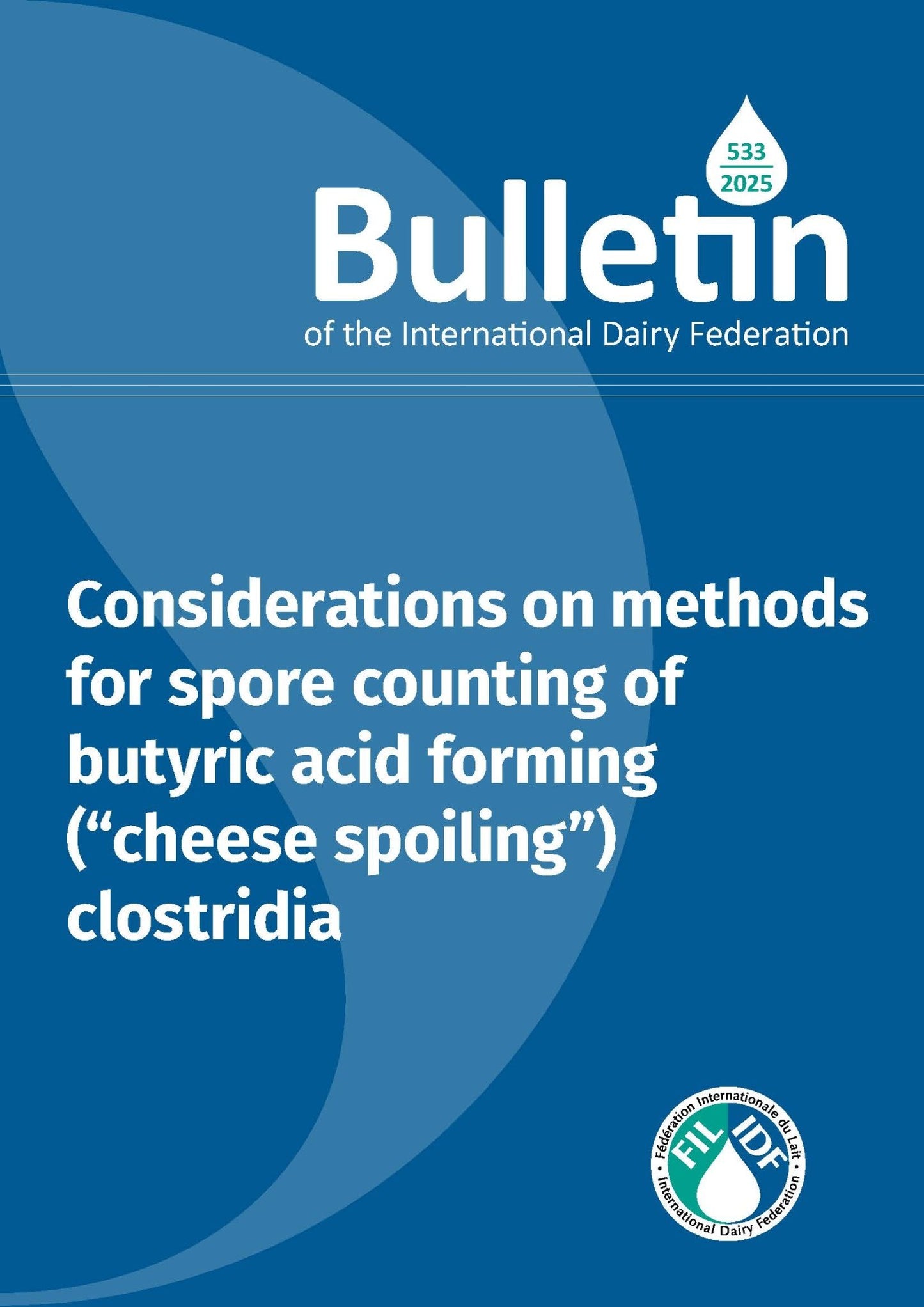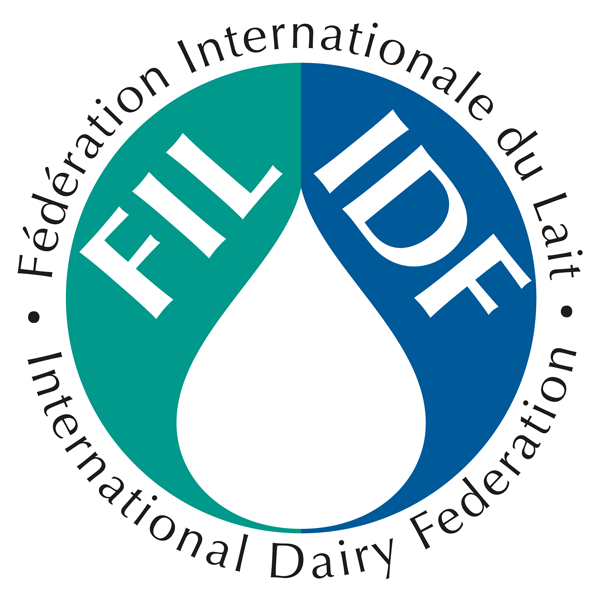Bulletin of the IDF N°533/2025: Considerations on methods for spore counting of butyric acid forming (“cheese spoiling”) clostridia
Couldn't load pickup availability
Document info
| doi | 10.56169/TOII7522 |
|---|---|
| pages | 30 |
| published date | 21 February 2025 |
| reference | Bulletin of the IDF N°530/2025 |
Publication description
The main risk factors for the presence of butyric acid bacteria in raw milk are poor quality silage and poor hygienic practices on the dairy farm. Spores of butyric acid bacteria can survive pasteurization of milk which is used in cheese production and are the causative agent of late blowing in cheese with severe economic impact on cheese production. As available methods for enumeration of cheese spoiling clostridia differ in both specificity and sensitivity, a comparison of results obtained using different methods requires special consideration. This bulletin of the IDF will list the methods currently available and in routine use by IDF members, focusing on method characteristics together with available performance and validation data. This might help to compare and better understand spore count results obtained with the different methods in use.
Cite this content as:
International Dairy Federation. (2025). Considerations on methods for spore counting of butyric acid forming (“cheese spoiling”) clostridia (Bulletin of the IDF N° 533/2025).
https://doi.org/10.56169/TOII7522


